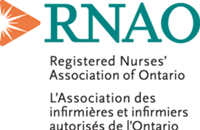Latest nursing numbers from CIHI reveal Ontario has the worst RN-to-population ratio in Canada
TORONTO, June 1, 2016 /CNW/ - A report on the country's nursing workforce by the Canadian Institute for Health Information (CIHI) confirms a dangerous reality about health-care services first identified by the Registered Nurses' Association of Ontario (RNAO). Not only is the registered nurse (RN) share of nursing employment dropping, but Ontario's RN-to-population ratio is now the worst in Canada. RNAO calculations based on CIHI figures show the province has only 711 RNs per 100,000 people compared to the national average of 841 per 100,000 people.
According to CIHI, registered practical nurses (RPNs) – who have two years of college education, as compared to RNs who hold a four-year university degree – increased their share of employment from 21.8 per cent to 28.5 per cent between 2006 and 2015 in Ontario. During that same time period, the RN share saw a corresponding drop across the province.
"This reinforces what we have been saying all along," says RNAO Chief Executive Officer Doris Grinspun, pointing out that patients today are much sicker, more complex and need the expertise of RNs to prevent complications and death.
Grinspun urges the Ontario government to follow RNAO's advice to direct hospitals to stop RN replacement. "We call once again on Minister Hoskins to immediately intervene." Grinspun says health organizations are making short-sighted changes in staffing skill mix to cut costs, instead of ensuring patients have the right care provider looking after them. "The relentless focus on the bottom line ignores evidence that shows patients who experience fewer complications are less likely to be re-admitted and experience lower mortality rates when RNs are responsible for their care," she says.
RNAO president Carol Timmings says the realities revealed by the CIHI numbers jeopardize Ontario's ability to adequately meet the care needs of its people. "The province must focus attention on two priorities. First, it must stop RN replacement, whether it is in the form of layoffs or by attrition. Second, it needs to increase the number of RNs providing care. We need almost 18,000 RNs just to catch up with the rest of the country."
RNAO says the figures released Tuesday support findings it made public two weeks ago. The association's report Mind the Safety Gap in Health System Transformation: Reclaiming the role of the RN makes several recommendations to restore the RN workforce and protect the health and safety of Ontarians. The report calls on the Ministry of Health to issue an immediate moratorium on nursing skill mix changes, legislate an all-RN workforce in acute care hospitals, and ensure all first home care visits be conducted by an RN. Timmings says these measures are necessary if the ministry intends to live up to its promise of putting patients first.
The Registered Nurses' Association of Ontario (RNAO) is the professional association representing registered nurses, nurse practitioners, and nursing students in Ontario. Since 1925, RNAO has advocated for healthy public policy, promoted excellence in nursing practice, increased nurses' contribution to shaping the health-care system, and influenced decisions that affect nurses and the public they serve. For more information about RNAO, visit our website at RNAO.ca or follow us on Facebook and Twitter.
SOURCE Registered Nurses' Association of Ontario

For more information, or to interview a nurse, please contact: Marion Zych, Communications Officer/Writer, Registered Nurses' Association of Ontario (RNAO), 416-408-5605, 647-406-5605 (cell), [email protected]

Share this article